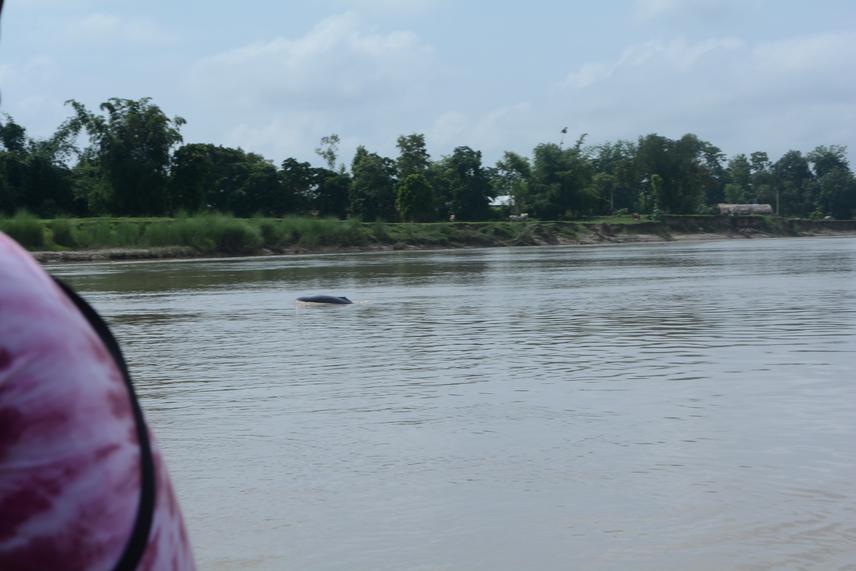Sunil Khatiwada
Ganges River Dolphins (Platanista gangetica, Roxburgh, 1801) have sighted frequently in a fragmented status in the Karnali River and its tributaries. Various developmental activities- in Nepal-India border have limited the mobility of species upstream to other river system in Nepal, making the population of Karnali River the only remaining population of Ganges dolphin. The study focuses on building stronger ties between existing community and conservation strategy, habitat status and usage of fresh water river system. The goal of the project is to involve community to monitor unsustainable developmental, combat negative anthropogenic activities and to build community based conservation initiatives as the prime habitat of the dolphin lies now outside of the protected areas of Nepal. Anthropogenic activities combined with developmental activities have intensely degraded the habitat of dolphins which calls for prompt and effective measures to conserve habitat for this protected mammalian species of Nepal.

Sighting of Ganges River Dolphin (in centre) at Mohan River.
Most of the endangered wildlife species in Nepal are found residing inside protected areas. These protected areas are governed by special laws and policies which help to conserve the wildlife and their habitat from deterioration. However, endangered species such as, Platanista gangetica, Ganges River Dolphin are found temporarily outside protected areas. The species outside the recognised protected areas should be taken as equally important as the species found within protected areas. In absence of strong regulatory bodies for protecting species outside protected areas, local communities and citizen scientist plays crucial role in conservation.
For the past many decades, Freshwater River Dolphins- have been critically affected and has resulted in severely fragmented population due to construction of infrastructures in and adjacent to river system. Hunting for oil and food caused high mortality rate of dolphin over the years which have resulted in reduction in population size. Developmental activities, pollutants, mortality in fishing gears have assisted too in reducing the population.
Nepal currently is undergoing nation restructuring after a decade political turmoil and in such time every state is trying to use its natural resources for their prosperity. So, it is of utmost importance to bring together community driven conservation initiatives to protect the habitat and at the same time attract the focus of policy maker to develop wildlife friendly infrastructure for conservation of protected species.
This study focuses in bringing people together who are sharing habitat with wildlife. It is an approach to enhance public participation along the entire river segments which will make any conservation strategy sustainable. Also, this work is aiming at developing citizen scientist whose roles are undermined while promoting habitat management. Habitat utilization and associated ecological parameters such as water temperature, and food availability will be analysed which will assist local level government while developing conservation plan. Furthermore, this study will work as a promotion tool for wildlife tourism and reach out greater audience which will help to generate income for the communities. In absence of promotion, since dolphin resides temporarily in Nepal, the species is not being able to raise needed concern among natural resource managers. Such negligence and unwise resource use had resulted in disappearance of Dolphin from other rivers in Nepal.
This funding opportunity will help to widen our conservation approaches and collaborations with locals and institutions. Scientific ecological data united with community engagement will help to trace the conservation priorities for policies formulation.